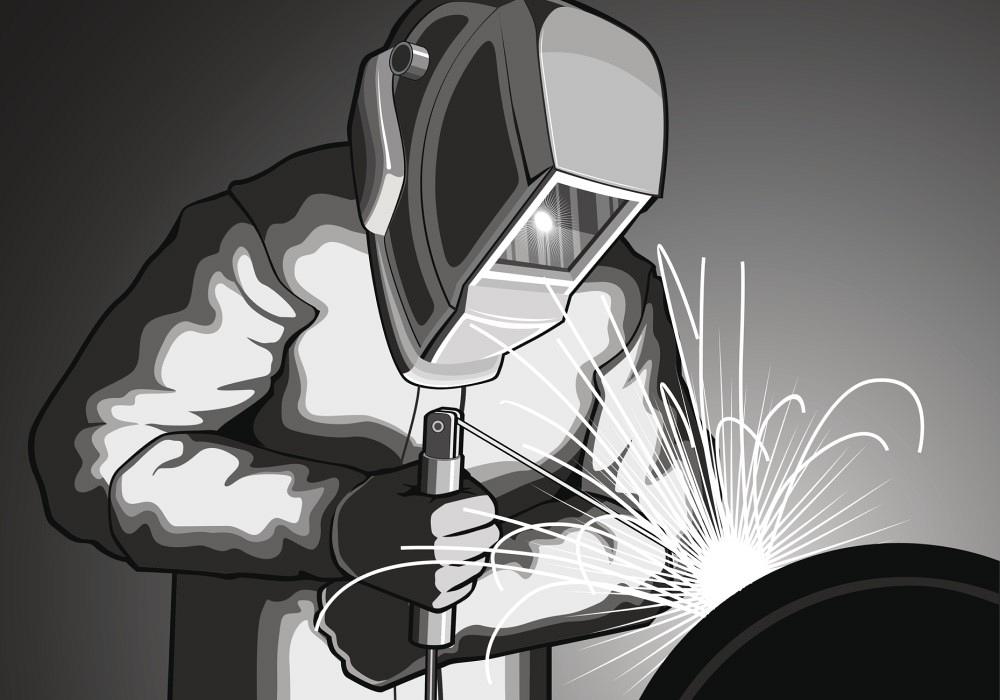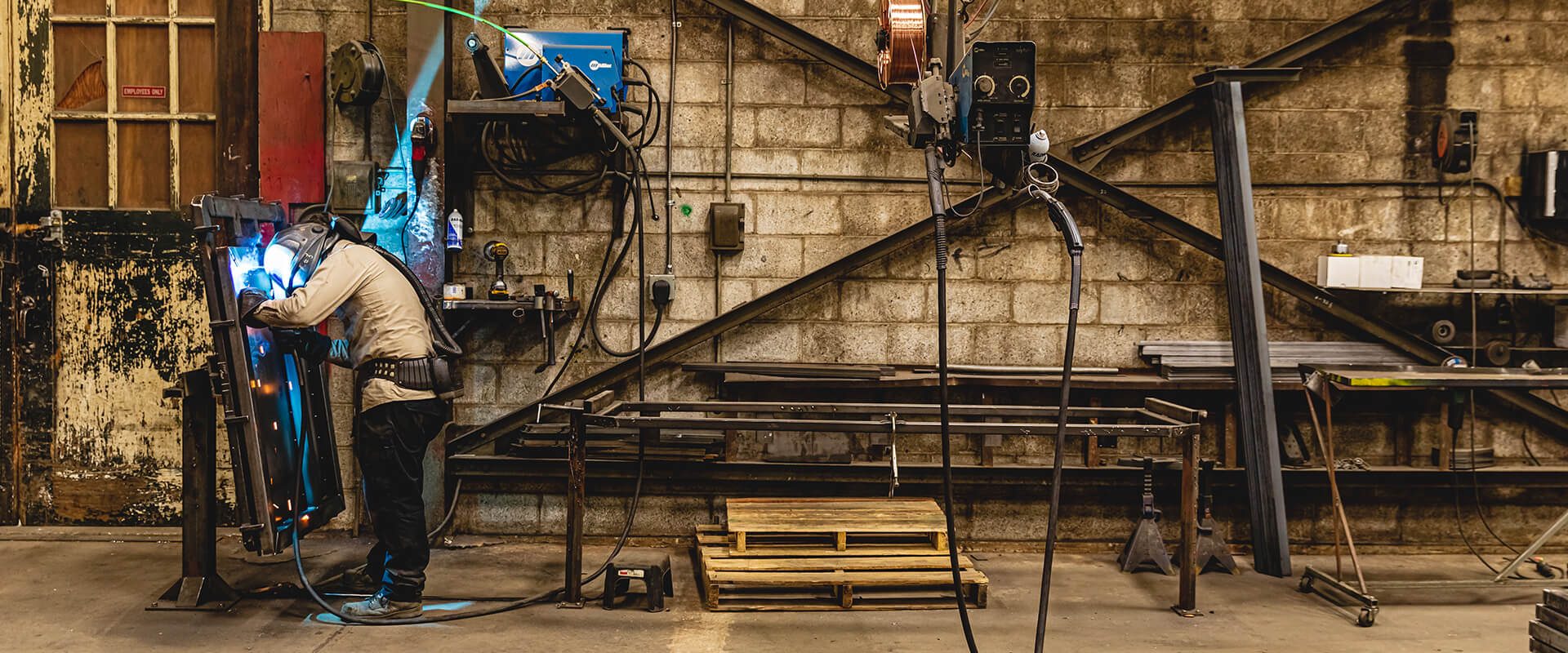Top-rated weld defect solutions from Montana Mobile Welding and Repair Belgrade Welding
Wiki Article
All Concerning Welding: Key Insights Into Techniques and Best Practices for Success
Welding incorporates a variety of techniques, each suited for particular products and applications. Comprehending these approaches, such as GMAW, SMAW, and TIG, is vital for attaining ideal results. The appropriate devices and safety techniques can not be neglected. As prep work and repairing play important duties in the welding procedure, mastering these aspects can substantially boost the high quality of the end product. What are the key aspects that ensure a successful weld?Comprehending Various Welding Strategies
Welding methods encompass a range of methods, each fit to details applications and materials. Amongst the most common techniques are Gas Metal Arc Welding (GMAW), Protected Steel Arc Welding (SMAW), and Tungsten Inert Gas Welding (TIG) GMAW, likewise recognized as MIG welding, is prominent for its speed and flexibility, making it excellent for thin materials. SMAW, or stick welding, is preferred for its simplicity and efficiency in outside settings, particularly with thicker steels. TIG welding uses accuracy and control, making it appropriate for complex work and non-ferrous steels (Montana Mobile Welding and Repair Fabrication). Each technique has its special benefits and considerations, permitting welders to choose the very best technique based upon the job's requirements, material kind, and wanted results. Recognizing these techniques is important for effective weldingCrucial Welding Equipment and Devices
While different welding techniques need specific skills, the ideal devices and tools are equally crucial for achieving high quality outcomes. Essential welding equipment includes welding machines, which vary depending upon the strategy-- such as MIG, TIG, or stick welding. Safety gear, including aprons, headgears, and handwear covers, warranties safety and security and comfort during the procedure. Furthermore, clamps and fixtures help secure materials in location, making certain accuracy in welds. Consumables like welding rods, cable, and securing gas are likewise important elements that influence the quality of the weld. Devices such as grinders and cutters promote surface area preparation and post-weld completing, contributing to a professional end result. Investing in premium devices inevitably boosts the performance and effectiveness of welding projects.Safety Practices in Welding
Proper security practices are important in the welding market to safeguard employees from potential threats. Welders have to use ideal individual protective devices (PPE), including safety helmets with correct shading, gloves, and flame-resistant clothes. Sufficient air flow is vital to lower exposure to dangerous fumes and gases created during the welding process. Furthermore, employees need to be learnt the proper handling of welding equipment to avoid mishaps. Fire security measures, such as maintaining flammable products away from the welding area and having fire extinguishers easily available, are necessary. Regular evaluations of equipment and offices can aid recognize prospective hazards prior to they lead to mishaps. By sticking to these safety and security techniques, welders can produce a safer working atmosphere and lessen dangers related to their trade.Preparing Materials for Welding
Preparing products for welding is a crucial step that greatly influences the quality and honesty of the final item (Fabrication). Proper preparation includes cleansing the surfaces to eliminate impurities such as dirt, rust, and oil, which can endanger the weld. Strategies such as grinding, fining sand, or using solvents are frequently used to attain a clean surface. Additionally, ensuring that the products fit together comfortably is important; spaces can bring about weak welds. It's also essential to think about the alignment and positioning of the parts, as this will certainly impact the simplicity of welding and the last end result. Picking the proper filler material and making certain compatibility with the base metals is essential for achieving solid, long lasting welds.Tips for Achieving High-Quality Welds
Achieving high-quality welds needs attention to detail and adherence to ideal practices throughout the welding process. Proper joint prep work is vital, guaranteeing surface areas are clean and cost-free from impurities. Choosing the appropriate filler material and welding method based on the base metals is vital for perfect bonding. Preserving regular traveling speed and angle while welding can advertise and stop defects uniformity. In addition, controlling warm input is important; extreme warmth can result in bending and weakened joints. Regularly checking the welds throughout the procedure permits for prompt changes if necessary. Employing appropriate post-weld therapies, such as cleaning and stress and anxiety alleviation, can enhance the longevity and honesty of the weld, ultimately making sure a successful outcome.Fixing Common Welding Issues
Welding frequently provides challenges that can influence the high quality and honesty of the last product. Typical issues such as porosity, inconsistent weld beads, and getting too hot can occur, each requiring details repairing techniques. Recognizing these issues is important for welders to boost their skills and accomplish suitable results.Porosity Troubles Explained
Porosity can frequently be ignored, it remains an important concern in welding that can endanger the honesty of a completed product. Porosity describes the existence of tiny gas pockets within the weld bead, which can compromise the joint and lead to early failing. This problem typically occurs from pollutants, wetness, or inappropriate securing gas insurance coverage during the welding procedure. To minimize porosity, welders should verify that the base materials are completely dry and clean, make use of appropriate protecting gases, and keep consistent welding specifications. Consistently evaluating the devices and setting can additionally help determine possible problems prior to they manifest in the weld. Addressing porosity successfully is important for achieving strong, durable welds that fulfill high quality criteria.
Inconsistent Weld Beads
Inconsistent weld beads can significantly impact the high quality and stamina of an ended up product. Numerous factors add to this concern, including improper traveling speed, incorrect amperage settings, and irregular electrode angles. When the welder moves too swiftly, a grain might show up slim and do not have penetration, while moving also gradually can trigger too much buildup. solvent welding In addition, using the wrong amperage can result in either undercutting or too much spatter, both of which compromise weld stability. The welder's method, such as inconsistent torch you can try this out movement, can also bring about unequal grain appearance. To reduce these issues, welders ought to concentrate on keeping stable, controlled movements and ensuring appropriate equipment setups to achieve uniformity in their welds. Consistency is essential to attaining reputable and strong welds.Getting Too Hot and Warping Issues
Too much warm throughout the welding process can lead to considerable getting too hot and deforming concerns, influencing the structural honesty of the workpiece. These issues usually materialize as distortion, which can compromise alignment and fit-up, making further assembly challenging. Factors adding to overheating include the choice of welding specifications, such as voltage and take a trip rate, as well as the sort of product being welded. To mitigate these issues, welders must preserve constant travel speed and ideal warm input while monitoring the workpiece temperature. Furthermore, preheating or post-weld warmth treatment can help minimize anxieties brought on by fast cooling - Montana Mobile Welding and Repair Belgrade Welding. Regular evaluation and adherence to best techniques are necessary in stopping overheating and ensuring the longevity and integrity of bonded structuresFrequently Asked Concerns
What Are the Career Opportunities in the Welding Sector?
The welding market offers varied profession chances, including settings as welders, teachers, engineers, and inspectors. Professionals can operate in production, construction, aerospace, and auto industries, gaining from solid demand and affordable incomes in various duties.Exactly How Can I Improve My Welding Speed Without Giving Up High Quality?
To boost welding speed without sacrificing high quality, one ought to exercise reliable methods, maintain tools, enhance setups, and improve hand-eye sychronisation. Routine training and looking for responses can additionally find more significantly add to attaining quicker, high-grade welds.What Certifications Are Available for Welders?
Many accreditations exist for welders, including those from the American Welding Society (AWS), the National Center for Building And Construction Education and Research (NCCER), and numerous industry-specific companies. These qualifications improve employability and show ability efficiency.Just How Does Welding Influence the Features of Metals?
Welding influences the residential properties of steels by altering their microstructure, which can bring about modifications in hardness, ductility, and strength. Warm input and air conditioning prices throughout the process greatly affect these material characteristics.Can I Weld Dissimilar Metals With Each Other?

Report this wiki page